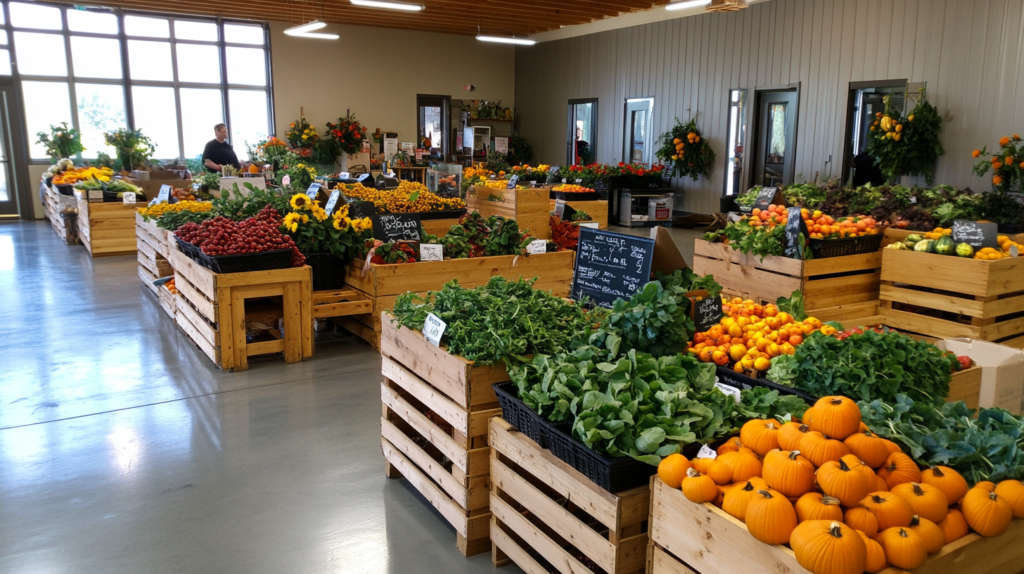
Shopping seasonally is one of the best ways to save money on groceries while enjoying the freshest and most flavorful produce. Seasonal items are often cheaper, more nutritious, and better for the environment. This guide will help you understand what to buy and when, so you can make the most of seasonal grocery shopping.
1. Why Shop Seasonally?
Key Benefits:
- Lower Costs: Seasonal items are abundant, reducing prices.
- Better Flavor: Produce picked at its peak tastes fresher and sweeter.
- Healthier Options: Seasonal produce is more nutrient-dense.
- Eco-Friendly: Locally grown seasonal items have a smaller carbon footprint.
2. What to Buy in Each Season
Spring
- Best Produce: Asparagus, peas, radishes, spinach, strawberries, and rhubarb.
- Why Buy Now: Early greens and berries are freshest and cheapest in spring.
- Meal Ideas: Make vibrant salads or enjoy fresh fruit parfaits.
Summer
- Best Produce: Watermelon, peaches, berries, corn, cucumbers, and tomatoes.
- Why Buy Now: Summer brings a wide variety of juicy, sun-ripened fruits and vegetables.
- Meal Ideas: Create refreshing smoothies, grilled corn salads, or fruit salsas.
Fall
- Best Produce: Apples, pumpkins, squash, sweet potatoes, and Brussels sprouts.
- Why Buy Now: Harvest season offers hearty, comforting vegetables perfect for soups and pies.
- Meal Ideas: Bake apple crisps, roast root vegetables, or make pumpkin soup.
Winter
- Best Produce: Oranges, grapefruits, kale, cabbage, and potatoes.
- Why Buy Now: Citrus fruits are at their juiciest, and hearty greens thrive in the cold.
- Meal Ideas: Enjoy citrus salads, mashed potatoes, or sautéed greens.
3. How to Save Money with Seasonal Shopping
1. Visit Farmers Markets
- Why It Helps: Local markets offer seasonal produce at competitive prices.
- Pro Tip: Shop near closing time for additional discounts on unsold items.
2. Buy in Bulk and Preserve
- Why It Helps: Preserve seasonal items through freezing, canning, or drying to enjoy them year-round.
- Example: Freeze berries or can tomatoes for off-season use.
3. Check Weekly Store Ads
- Why It Helps: Grocery stores often feature seasonal items in weekly promotions.
- Pro Tip: Plan your meals around sale items for maximum savings.
4. Off-Season Alternatives
When your favorite produce isn’t in season, you can still save money:
- Frozen Produce: Flash-frozen fruits and vegetables retain nutrients and flavor.
- Canned Goods: Opt for no-salt or low-sodium options for a healthier choice.
- Imported Items: Choose in-season produce from other regions, but watch for higher prices.
5. Seasonal Shopping for Meat and Seafood
Seasonality isn’t just for fruits and vegetables. Meat and seafood have optimal buying times too:
- Spring: Lamb is often cheaper around Easter.
- Summer: Look for deals on grilling favorites like hot dogs and burgers.
- Fall: Turkey prices drop around Thanksgiving.
- Winter: Shellfish like shrimp and crab are often discounted during holiday feasts.
6. Tips for Sticking to Seasonal Shopping
- Use a Seasonal Chart: Keep a chart handy to know what’s in season each month.
- Get Creative with Recipes: Experiment with new dishes to make the most of seasonal items.
- Be Flexible: Swap out-of-season ingredients with available alternatives.
Practical Takeaway
Seasonal shopping is an easy way to save money, support local farmers, and enjoy the best flavors of each season. By knowing what to buy and when, you’ll keep your meals fresh and your budget intact. Start incorporating seasonal items into your grocery routine and reap the benefits year-round.
